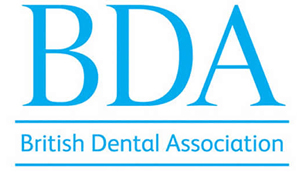- Home
- About us
- Find a practice
Practices in East Sussex
Practices in South West
Practices in Norfolk
Practices in Portsmouth
- Advanced Services
- Treatments
- Our Fees
- Reviews
- Contact
- Home
- About us
- Find a practice
Practices in East Sussex
Practices in South West
Practices in Norfolk
Practices in Portsmouth
- Advanced Services
- Treatments
- Our Fees
- Reviews
- Contact
Request an appointment
For dental appointments, please fill in the form below and we will call you back or email you to confirm your appointment.
Oral lichen planus
What is oral lichen planus?
Lichen planus is a long-lasting disease, which can affect the mouth and sometimes other areas of the body. When it appears in your mouth it is called ‘oral lichen planus’. It can appear on its own or as part of a disease affecting other parts of your body. Oral lichen planus usually happens in middle to late life and more women get it than men.
What are the signs and symptoms of oral lichen planus?
Lichen planus shows in many different ways. The most common signs are white patches on the lining of your mouth (usually your cheeks, tongue and gums). These don’t usually hurt, but sometimes there can be redness, ulcers or, very rarely, blistering as well as the white patches. If so, you may find it painful to eat hot or spicy foods.
What are the causes of oral lichen planus?
We do not know the cause of Lichen Planus with most patients.
It may be a sign of a mild weakness in the body’s immune (defence) system, but patients with lichen planus are otherwise well. Occasionally it can be caused by a reaction to medicines such as some painkillers, diabetic treatments, drugs for high blood pressure, beta-blockers, gold, penicillamine and a number of other drugs. Oral lichen planus does not seem to be caused by an infection, nor does it run in families.Emotional stress and spicy food or citrus fruits can often cause symptoms to worsen.
How is oral lichen planus diagnosed?
Usually it will be diagnosed after a careful examination by a specialist. Because the signs and symptoms of oral lichen planus can be like those of some other disorders, a ‘biopsy’ is usually needed to be sure about the diagnosis. A biopsy is a very simple procedure, done under a local anaesthetic, where a small piece of tissue is removed from the mouth. The area usually heals within 7 to 10 days.
What is the treatment of oral lichen planus?
Usually lichen planus only needs to be treated when there are painful symptoms. Sometimes patients with white patches that are not painful complain of a mild roughness of the lining of the mouth. But this usually does not need any treatment. When oral lichen planus does need treating, it is usually done by putting a corticosteroid cream on the area. Some areas may need other treatments, such as immunosuppressants applied to the area, and very rarely you might need to take a corticosteroid or other similar tablets.
Does oral lichen planus go away?
Oral lichen planus generally never goes away. Patients will usually continue to have white patches on the lining of the mouth. Treatment will lessen the pain, although it is not usually possible to tell when painful periods are likely.
Are there any long-term complications of oral lichen planus?
There may be some connection between oral lichen planus and cancer of the mouth in perhaps 1% to 3% of patients who have had the condition a long time. The exact connection between oral lichen planus and cancer is not certain, and only a very few patients with oral lichen planus ever have such complications.
Can I stop myself getting oral lichen planus?
As the cause is usually not known it is impossible to stop oral lichen planus happening. To avoid the risk of serious disease of the lining of your mouth:
- Don’t smoke
- Don’t drink large amounts of alcohol
- Do have a diet with plenty of fresh fruit and vegetables
- Everyone, whether they have oral lichen planus or not, should clean their teeth regularly twice a day with a fluoride toothpaste. They should also have their teeth and gums checked regularly by a dentist so that any changes in the lining of the mouth can easily be spotted
Source: British Dental Health Foundation
Book an appointment at Dentistry For You
To start your journey to a new smile book an appointment with us today.
Why Dentistry For You?
- Established over 35 Years
- NHS & private dental care
- High quality treatments provided by experienced dentists
- In house quality assurance programme
- Over 2700 patient reviews across all locations
- All our practices are wheelchair friendly
Patient satisfaction is very important to us





